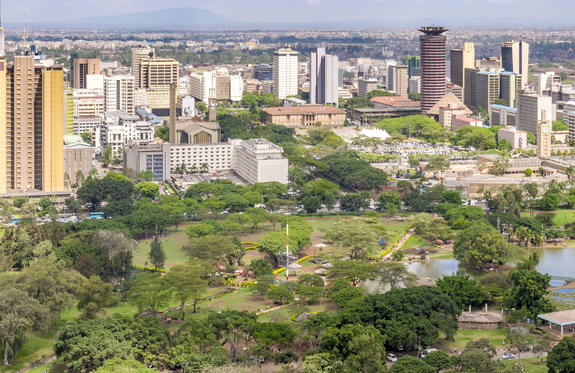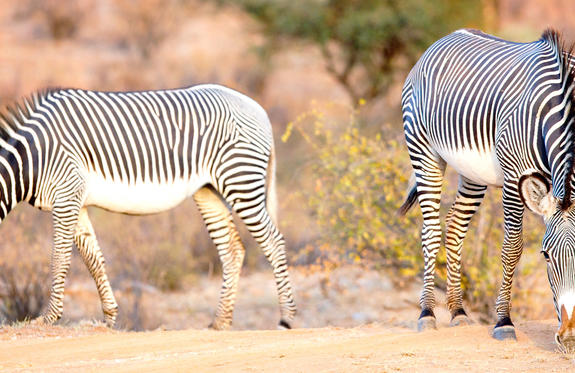
Situated in along the Nairobi River in beautiful Kenya, the capital of Nairobi is East Africa's most cosmopolitan city. It serves as an excellent starting point for African safari trips around Kenya. Nairobi is Africa’s 4th largest city and is a vibrant and exciting place, and although it has developed a reputation which keeps tourist visits brief, there are some fascinating attractions: its cafe culture, unbridled nightlife, the National Museum, the Karen Blixen Museum and most notably just 20 minutes from the city centre wild lions and buffalo roam in the world’s only urban game reserve. Make sure you pay a visit to the elephant orphanage operated by the David Sheldrick Wildlife Trust.
NOTE: Plastic bags are now banned in Kenya, Rwanda, Tanzania and Uganda, and are likely to be confiscated by customs officials on arrival, whether in clients’ baggage or carried by hand. For example, Duty-Free bags

Kalama Community Wildlife Conservancy, an exclusive and collectively-owned 95,000 hectare-large wildlife Conservancy, borders the Samburu National Reserve in Northern Kenya. It also borders Ngutuk Ongiron Group Ranch to the west, Namunyak Community Conservation Trust to the north and Sera Community Wildlife Conservation to the north east. Kalama is part of Northern Rangelands Trust (NRT - www.nrt-kenya.org). The Samburu ecosystem is a well-known area in central Kenya comprising of Buffalo Springs National Reserve, Samburu National Reserve and Kalama Conservancy. The natural environment is arid and semi-arid; open scrub and grasslands with significant environmental variation based on altitude. Highlands of the Leroghi Plateau (Ldonyo) are relatively cool and well-watered. Lowlands (Lpurkel) are quite dry and hot, semi-desert. The area is home to the ‘Samburu Special Five’ – indigenous species only found in this area namely the Beisa oryx, the gerenuk, the Somali ostrich, the Grevy’s zebra and reticulated giraffe. Guests visiting this pristine conservancy can encounter the abundant wildlife away from the crowds and uninterrupted by other vehicles as only the lodges and camps situated in the conservancy have the right to game drive in this area.
NOTE: Plastic bags are now banned in Kenya, Rwanda, Tanzania and Uganda, and are likely to be confiscated by customs officials on arrival, whether in clients’ baggage or carried by hand. For example, Duty-Free bags

The Maasai Mara together with Tanzania’s Serengeti form Africa’s most famous wildlife park. The image of acacia trees on an endless grass plain epitomises Africa for many, and then add a Masaai warrior and some cattle to the picture and the conversation need go no further.
The annual wildebeest migration through the Serengeti and the Masai Mara is the largest mass movement of land mammals on the planet – with more than a million animals following the rains. But that is not where the game viewing ends; large prides of lions, elephants and giraffes in grasslands, gazelles and eland to mention but a few. Aside from traditional vehicle safaris, hot-air ballooning over the Mara plains has become almost essential and you can even do a horseback safari.
NOTE: Plastic bags are now banned in Kenya, Rwanda, Tanzania and Uganda, and are likely to be confiscated by customs officials on arrival, whether in clients’ baggage or carried by hand. For example, Duty-Free bags





